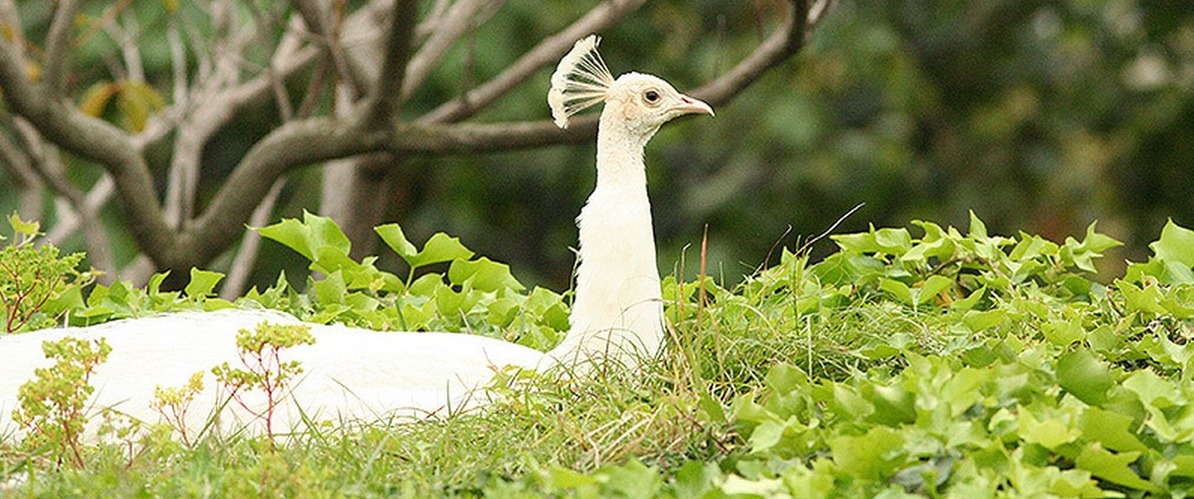16.8 How do species evolve?
In the wild, species are constantly changing, although it is usually difficult to see the change because this happens very slowly. The basis for the evolution of species are mutations that occur in the genomic DNA of an organism. This is constantly happening in all organisms. Most of these mutations are repaired or insignificant. However, some mutations persist and affect the survival and progeny of individuals.
The picture below shows a white peacock. It has a mutation in its genome that prevents the development of coloured feathers. When the mutation is also present in the germ cells, it will be passed onto offspring.

The peacock's feathers do not produce colour pigment as a result of a genetic mutation.
Harmful mutations disappear because individuals that carry the mutation reproduce poorly. If the mutation is favorable, e.g. protects the organism against predator or helps them survive the winter, it will be passed on to the next generation. In this way, species become slightly different from generation to generation. The elimination of harmful traits and the passing on favourable traits to the next generation is called natural selection. Over time, this process allows organisms to adapt to their environment.
How can new species arise from existing species? For species to separate from one another, different reproductive barriers are formed. These barriers prevent the mating between two species or the reproduction of viable and fertile offspring between two spece. This may happen, for example, if one part of a previously unified population is isolated from the other parts of the populations. As there is no contact between these two populations, they can then gradually evolve in different directions. Over time, the differences become so great that individuals of different populations can no longer reproduce with each other. When this happens, a new species has emerged.